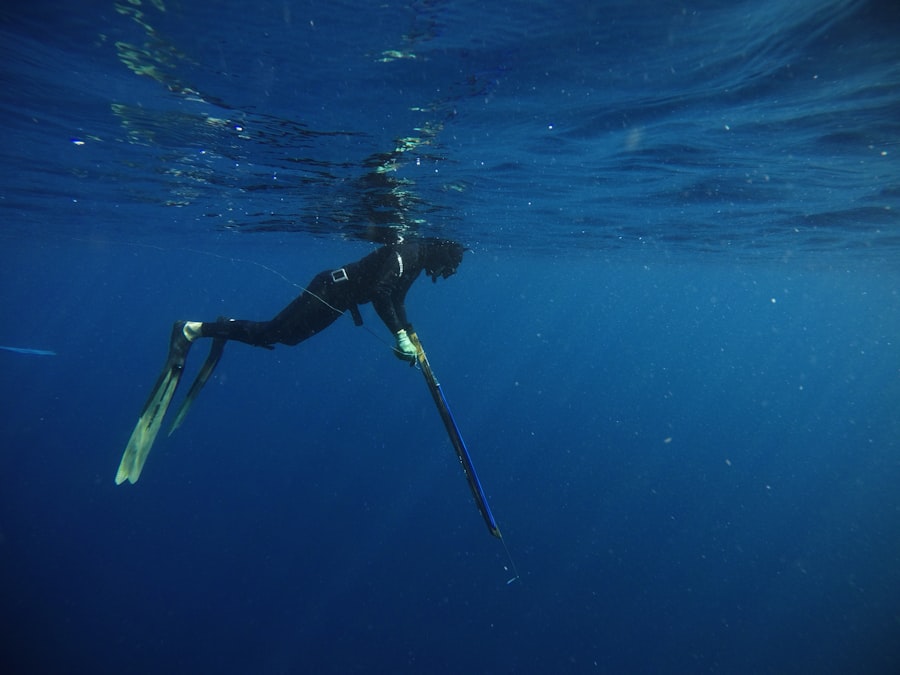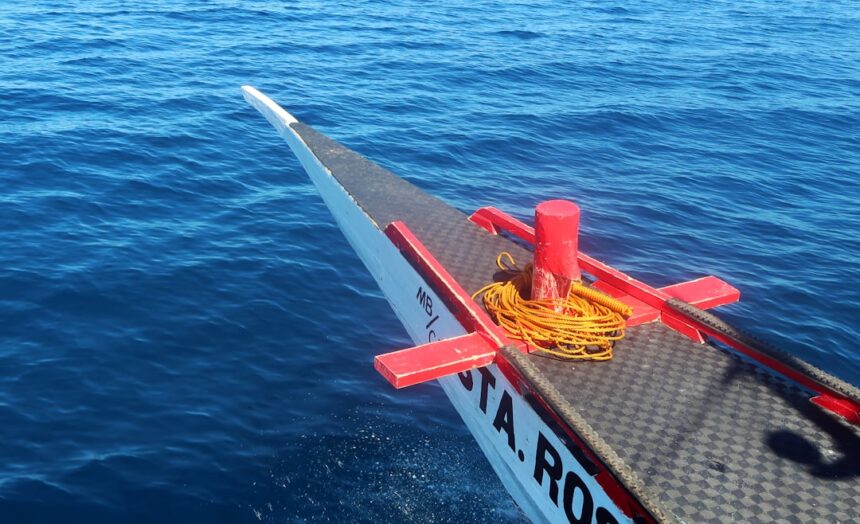In recent years, Russia has made significant strides in the development of advanced underwater drone technology, positioning itself as a formidable player in the realm of unmanned maritime systems. These underwater drones, often referred to as unmanned underwater vehicles (UUVs), are designed for a variety of applications, ranging from military operations to scientific research. The Russian government has invested heavily in this program, recognizing the strategic advantages that such technology can provide in terms of national security and maritime dominance.
As global tensions rise and competition for maritime resources intensifies, the importance of these advanced underwater drones cannot be overstated. The emergence of Russia’s underwater drone program reflects a broader trend in military modernization, where nations are increasingly turning to unmanned systems to enhance their operational capabilities. With the ability to conduct surveillance, reconnaissance, and even offensive operations without risking human lives, these drones represent a significant evolution in naval warfare.
As Russia continues to refine its underwater drone technology, the implications for regional and global security dynamics are profound, warranting a closer examination of the program’s history, capabilities, and potential future developments.
Key Takeaways
- Russia’s advanced underwater drone program has significant strategic implications and has raised international concerns.
- The history and development of Russia’s underwater drone technology has been marked by significant advancements and breakthroughs.
- Key features and capabilities of Russia’s underwater drones include long-range capabilities, autonomous operation, and advanced sensor systems.
- Russia’s underwater drones have a wide range of applications, including military reconnaissance, underwater exploration, and potentially even covert operations.
- The future prospects and developments in Russia’s underwater drone technology could have a major impact on global security and the balance of power in the maritime domain.
History and Development of Russia’s Underwater Drone Technology
The roots of Russia’s underwater drone technology can be traced back to the Cold War era when the Soviet Union invested heavily in various forms of military technology, including submarines and autonomous underwater vehicles. However, it was not until the early 21st century that significant advancements were made in the field of unmanned underwater systems. The collapse of the Soviet Union initially hindered progress, but renewed interest in military modernization and technological innovation led to a resurgence in underwater drone development.
In the 2010s, Russia began to unveil its ambitious plans for underwater drones, showcasing prototypes and concepts that highlighted their potential applications. The introduction of systems like the Poseidon, a nuclear-powered underwater drone capable of carrying out long-range missions, marked a turning point in the program’s evolution.
The combination of state funding and technological expertise has allowed Russia to develop a range of UUVs that cater to various operational needs.
Key Features and Capabilities of Russia’s Underwater Drones

Russia’s underwater drones are characterized by their advanced engineering and innovative design features that set them apart from traditional naval assets. One of the most notable aspects is their stealth capabilities, which allow them to operate undetected in hostile environments. These drones are equipped with sophisticated sonar systems and advanced navigation technologies that enable them to traverse complex underwater terrains while avoiding detection by enemy forces.
In addition to stealth, many of Russia’s underwater drones are designed for versatility. They can be deployed for a wide range of missions, including intelligence gathering, mine detection, and even offensive operations against enemy vessels. The Poseidon drone, for instance, is not only capable of carrying out reconnaissance missions but can also deliver payloads that could potentially disrupt maritime infrastructure.
This multi-role capability enhances the strategic value of these drones, making them an integral part of Russia’s naval strategy.
Applications and Uses of Russia’s Underwater Drones
| Application | Use |
|---|---|
| Defense | Surveillance, reconnaissance, and protection of maritime borders |
| Oil and Gas Industry | Underwater inspections, maintenance, and repair of offshore infrastructure |
| Scientific Research | Exploration of marine ecosystems, mapping of underwater terrain, and studying marine life |
| Commercial Fishing | Monitoring fish populations, tracking migration patterns, and assessing environmental impact |
The applications of Russia’s underwater drones extend beyond military operations; they also play a crucial role in scientific research and environmental monitoring. These drones are increasingly being utilized for oceanographic studies, allowing researchers to gather data on marine ecosystems and monitor changes in ocean conditions. By deploying UUVs equipped with sensors and cameras, scientists can explore previously inaccessible areas of the ocean and gain valuable insights into its dynamics.
In military contexts, the primary applications of these drones revolve around surveillance and reconnaissance missions. They can be deployed to gather intelligence on enemy naval movements or assess the status of critical maritime infrastructure. Additionally, their ability to operate autonomously allows for prolonged missions without the need for human intervention, making them ideal for monitoring vast oceanic regions.
As tensions escalate in various geopolitical hotspots, the strategic importance of these applications becomes increasingly evident.
Comparison with Other Countries’ Underwater Drone Programs
When comparing Russia’s underwater drone program with those of other nations, it becomes clear that several countries are also investing heavily in this technology. The United States, for instance, has developed its own range of UUVs designed for various military applications. American drones often emphasize advanced sensor technologies and data integration capabilities, allowing for seamless communication with other naval assets.
China is another key player in the underwater drone arena, with its own ambitious programs aimed at enhancing naval capabilities. Chinese UUVs have been designed for both military and civilian purposes, reflecting a dual-use approach that mirrors some aspects of Russia’s strategy. However, while both China and the United States focus on technological advancements and operational integration, Russia’s emphasis on stealth and multi-role capabilities distinguishes its program from those of its competitors.
Challenges and Limitations of Russia’s Underwater Drone Program

Despite its advancements, Russia’s underwater drone program faces several challenges that could hinder its long-term success. One significant limitation is the technological gap that still exists between Russia and its Western counterparts. While Russia has made impressive strides in developing UUVs, it often lags behind in areas such as artificial intelligence integration and data processing capabilities.
This technological disparity could impact the effectiveness of Russian drones in complex operational environments. Additionally, logistical challenges pose a significant hurdle for the deployment and maintenance of these underwater drones. The harsh conditions of the ocean environment can lead to wear and tear on equipment, necessitating robust support systems for repairs and upgrades.
Furthermore, the need for specialized training for operators adds another layer of complexity to the program. Without addressing these challenges, Russia may struggle to fully realize the potential of its underwater drone capabilities.
Strategic Implications of Russia’s Underwater Drone Program
The strategic implications of Russia’s advanced underwater drone program are profound and multifaceted. As these drones become more integrated into naval operations, they could significantly alter the balance of power in contested maritime regions. Their ability to conduct covert surveillance and gather intelligence on enemy movements provides Russia with a tactical advantage that could be leveraged during conflicts or crises.
Moreover, the development of long-range UUVs like Poseidon raises concerns about potential escalation scenarios. The capability to launch nuclear payloads from underwater positions introduces a new dimension to deterrence strategies, complicating existing frameworks for conflict resolution.
International Response and Concerns about Russia’s Underwater Drone Program
The international response to Russia’s underwater drone program has been one of cautious concern. NATO allies have closely monitored developments within this domain, recognizing the potential threats posed by advanced UUVs operating in contested waters. The prospect of Russian drones conducting surveillance or offensive operations near allied territories has prompted discussions about enhancing maritime security measures.
Furthermore, there are apprehensions regarding the proliferation of such technology to other nations or non-state actors. As countries like Russia continue to develop sophisticated underwater drones, there is a risk that similar technologies could fall into the hands of adversaries or be used for malicious purposes. This concern underscores the need for international dialogue on regulating unmanned systems and establishing norms for their use in military contexts.
Future Prospects and Developments in Russia’s Underwater Drone Technology
Looking ahead, the future prospects for Russia’s underwater drone technology appear promising yet uncertain. Continued investment in research and development is likely to yield further advancements in capabilities such as autonomy, endurance, and payload capacity. As artificial intelligence becomes more integrated into military systems globally, it is expected that Russian UUVs will also adopt these technologies to enhance decision-making processes during missions.
Moreover, collaboration between military and civilian sectors may lead to innovative applications beyond traditional military uses. As environmental concerns grow worldwide, there may be opportunities for Russian underwater drones to contribute to global efforts in marine conservation and climate monitoring. By diversifying their applications, these drones could play a role in addressing pressing global challenges while simultaneously enhancing national security interests.
Impact of Russia’s Underwater Drone Program on Global Security
The impact of Russia’s advanced underwater drone program on global security is significant and multifaceted. As these drones become more prevalent in naval operations, they could reshape existing power dynamics in maritime regions around the world. The ability to conduct covert surveillance or launch precision strikes from underwater positions introduces new complexities into conflict scenarios.
Additionally, as nations respond to Russia’s advancements by bolstering their own underwater capabilities, there is a risk of escalating tensions in already volatile regions. The potential for miscalculations or misunderstandings during encounters involving UUVs could lead to unintended confrontations at sea. Therefore, establishing clear communication channels and protocols for engagement will be essential in mitigating risks associated with this evolving technology.
The Significance of Russia’s Advanced Underwater Drone Program
In conclusion, Russia’s advanced underwater drone program represents a critical component of its broader military strategy and technological ambitions. With a rich history rooted in Cold War innovations and a commitment to modernizing its naval capabilities, Russia has positioned itself as a leader in unmanned maritime systems. The key features and applications of these drones highlight their versatility and strategic importance across various domains.
As global security dynamics continue to evolve, understanding the implications of Russia’s underwater drone program becomes increasingly vital for policymakers and military strategists alike. The challenges faced by this program must be addressed to ensure its effectiveness while also considering the broader international context surrounding unmanned systems. Ultimately, as nations navigate this new era of maritime warfare characterized by advanced technologies like UUVs, cooperation and dialogue will be essential in fostering stability and preventing conflict on the high seas.
Russia’s underwater drone program has garnered significant attention in recent years, particularly as tensions in the region escalate. A related article that delves deeper into the implications of this technology can be found at




